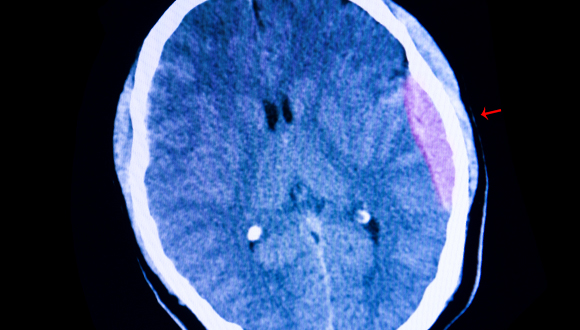The Hidden Risks of Head Injuries: Why You Shouldn't Brush Them Off
Feb. 11, 2022 - Katie McCallumWe've all likely had a moment after hitting our head where we've asked ourselves if we should be worried.
The answer, according to Houston Methodist neurosurgeon Dr. Gavin Britz, is to err on the side of caution. The event might have seemed unremarkable, but what looks like just a bump or bruise can sometimes lead to a potentially fatal brain injury.
"If you have a head injury, you never — and I mean never — be by yourself for the first 24 hours," Dr. Britz warns. "Hitting your head and dying in your sleep is always possible. After head trauma, always be with a family member, friend or someone who can monitor you and even wake you up from your sleep to check on you."
If head trauma is severe or violent, if it came as a result of impact at a high speed, Dr. Britz says it's best to go to the ER to be evaluated even if you don't notice any symptoms.
As Dr. Britz explains it, some head injuries can result in one of two life-threatening scenarios.
"If the injury is severe enough to cause a skull fracture that ruptures a blood vessel or an artery in the brain, an epidural hematoma can occur," warns Dr. Britz.
An epidural hematoma is when blood accumulates between the skull and the covering surrounding the brain.
"These clots can continue to grow, and, if they grow large enough, cause death," says Dr. Britz. "The person may initially seem fine — known as the "lucid" interval — but then the blood clot expands over time and ultimately becomes deadly."
Epidural hematomas are the more common cause of fatal brain injury in younger adults.
"The other scenario is the development of a subdural hematoma, which occurs when the trauma ruptures a vein that lies between the membrane surrounding the brain and the brain itself," Dr. Britz explains. "This clot can lead to a slow brain bleed, eventually causing death."
Subdural hematomas are more common in elderly people because, as the brain shrinks with age, veins become more stretched — making them more susceptible to injury. Additionally, many older patients are on blood thinners, which makes the blood clot worse.
Ultimately, the message is clear: Head injuries need to be taken seriously.
This is why someone who experiences severe head trauma is admitted to the hospital for observation after their initial brain scan.
"For less severe trauma followed by a normal brain scan, we still always warn the person of the risk of a delayed blood clot and advise them to not be alone," says Dr. Britz.
How do you know when a head injury means a trip to the ER?
The signs and symptoms to be on the lookout for after hitting your head include:
- Loss of consciousness
- Confusion
- Headaches
- Nausea and vomiting
- Slurred speech or issues reading and writing
- Impaired balance, dizziness or weakness
- Changes to eyesight
- Bleeding
- Discharge from the nose or ears
- Seizures
Seek immediate medical attention at the ER or call 911 immediately if the blow was violent or you notice any of the above symptoms.








